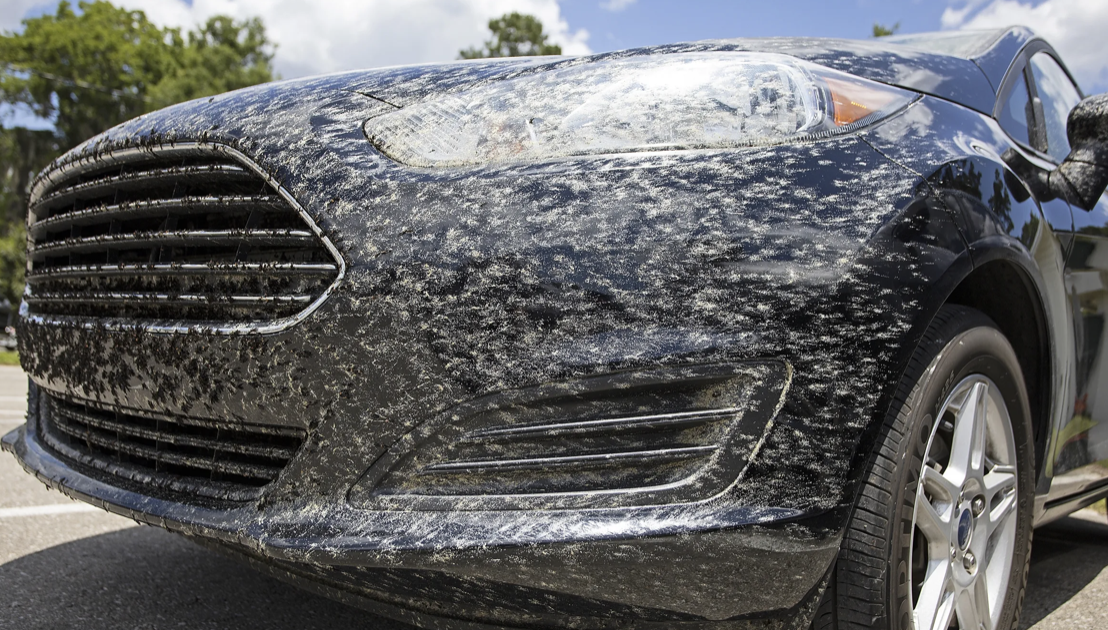What Are Love Bugs and Why Are They So Annoying in Florida?
If you’ve spent any time in Florida during the spring and fall, you’ve probably encountered love bugs—those pesky insects that seem to swarm at the most inconvenient times. Known for their nuisance factor, love bugs often cause a variety of problems for drivers, homeowners, and anyone who ventures outdoors during peak season. But what exactly are love bugs? And why do they seem to be so prevalent in Florida? In this article, we’ll dive into the life cycle of love bugs, explore why they’re so irritating, and offer practical tips to help you deal with them.
What Are Love Bugs?
Love bugs (scientifically known as Plecia nearctica) are a type of flying insect native to Central America and the southeastern United States. They are part of the family Bibionidae, which is commonly referred to as “March flies.” Despite the name “love bugs,” these insects are actually two separate species that mate and fly together in a distinctive formation. This unique behavior is a defining characteristic of love bugs, and it’s the primary reason they’re so easily recognizable.
Love bugs are relatively small—around half an inch long—and are black with a red thorax. Their wings are veined and appear dark, which can make them harder to spot when they’re flying in swarms. However, it’s not the love bugs themselves that are the biggest problem. It’s their mating season, which leads to an explosion of these insects in certain parts of the country.
Why Are Love Bugs So Annoying in Florida?
Florida is known for its humid subtropical climate, which creates the perfect breeding grounds for love bugs. In fact, Florida’s warm weather, particularly in the spring and fall, encourages love bugs to mate and lay their eggs in the fertile soil. This is when you’ll notice love bugs in the highest concentrations, usually during peak swarm seasons.
The reason love bugs are so annoying in Florida boils down to a few key factors:
- Swarm Behavior: Love bugs are often seen in large groups or swarms, sometimes by the thousands. This swarming behavior can be overwhelming, especially if you’re outside or driving during peak love bug season.
- Short Mating Season: While love bugs are active year-round, their mating season generally peaks in the spring and fall. These short bursts of intense activity can feel like they last forever, especially when you’re constantly dodging love bugs or cleaning their mess.
- Damage to Vehicles: Love bugs tend to fly into cars as they mate in mid-air, leaving behind a sticky mess on the front grill, windshield, and other parts of the vehicle. Their acidic bodies can cause long-lasting damage to the paint if not cleaned off properly.
- Allergies and Irritation: Although love bugs themselves are not harmful to humans, their large swarms can be bothersome for people with allergies. Additionally, the decomposing bodies of love bugs can release an unpleasant odor and attract other pests.
- Attracting Other Pests: The attraction of love bugs doesn’t stop with humans. They also attract other insects, such as ants, which feed on the decomposing bodies. This can further exacerbate the issue, especially for homeowners trying to enjoy their outdoor spaces.
The Life Cycle of Love Bugs
To understand why love bugs are so prevalent during certain times of the year, it helps to look at their life cycle. Love bugs undergo a complete metamorphosis, transitioning from egg to larva, pupa, and adult. Here’s a brief breakdown of their life cycle:
- Eggs: Love bugs lay their eggs on the soil, typically in grassy or wooded areas. The eggs hatch into larvae after about 3 to 4 days.
- Larvae: Love bug larvae feed on decaying organic matter, such as dead plants and leaves. They stay in the larval stage for about 2 weeks before pupating.
- Pupae: After the larvae phase, the love bug enters the pupal stage. During this time, the larvae transform into adult love bugs.
- Adults: Once they reach adulthood, love bugs typically mate in mid-air, staying connected for an extended period of time. This is when they swarm the most, often in areas with large concentrations of food sources, like trees and gardens. Their primary goal during this phase is reproduction, which is why they’re often seen flying in pairs.
The Impact of Love Bugs on Your Vehicle
As mentioned earlier, one of the biggest problems love bugs cause in Florida is the damage they can inflict on vehicles. The love bug’s body contains certain acids that, while harmless to humans, can be damaging to the paint on your car. When love bugs collide with your car, especially during high-speed driving, they leave behind a sticky, acidic residue. Over time, this residue can erode the clear coat and paint, leading to permanent damage.
The best way to avoid this damage is to remove the love bug residue as soon as possible. The longer the bug remains on your car, the more difficult it becomes to clean. If not removed promptly, the acidic residue can cause discoloration and damage to your vehicle’s finish.
How to Remove Love Bug Residue
If you’ve ever driven through a swarm of love bugs, you’re familiar with the aftermath—a sticky, hard-to-remove mess on your car. Fortunately, there are several methods and products available to help you clean your vehicle and prevent any lasting damage. Here are three great at-home removal products that can help you keep your car spotless:
1. Bug and Tar Remover
Bug and tar removers are formulated specifically to break down and dissolve the sticky residue left behind by love bugs. These products are available in both spray and wipe forms. Simply apply the product to the affected areas, let it sit for a few minutes, and then wipe it away with a clean cloth. Bug and tar removers are effective at removing love bug remains without damaging the paint.
Recommended Product:
- Meguiar’s Heavy Duty Bug and Tar Remover
This product is highly rated for its ability to break down tough residues. It’s gentle on your vehicle’s paint while being tough on bug remains.
2. Car Wash Soap with Bug Removal Formula
Some car wash soaps come with built-in bug removal properties. These soaps often contain surfactants that help lift and break down the sticky residues from love bugs while you wash your car. Using a bug-specific car wash soap is a great way to clean your vehicle thoroughly without requiring multiple products.
Recommended Product:
- Chemical Guys Bug and Tar Remover Car Wash Soap
Chemical Guys’ car wash soap includes a bug and tar remover formula that works well for both hand washes and automatic washes. It leaves your car looking clean without damaging its paint.
3. Clay Bar Kit
For a more thorough cleaning, especially if love bug residue has dried on your vehicle, you can use a clay bar kit. The clay bar helps remove not only love bug remains but also other contaminants like tree sap and industrial fallout. This method restores the smoothness of your vehicle’s paint and ensures a deep clean.
Recommended Product:
- Griot’s Garage Paint Cleaning Clay Kit
This kit includes everything you need to remove contaminants from your vehicle’s surface. It’s gentle yet effective and can be used on both new and older cars.
Conclusion
Love bugs are an unavoidable nuisance in Florida, especially during their peak mating seasons in the spring and fall. These insects, though harmless, can cause significant damage to your vehicle if their residue is not removed in a timely manner. Fortunately, by understanding their behavior and using the right cleaning products, you can minimize the damage caused by love bugs. Whether you choose a bug and tar remover, a car wash soap with a bug removal formula, or a clay bar kit, prompt removal of love bug remains will help keep your vehicle looking pristine and protected for years to come.
By staying informed and prepared, you can avoid the worst effects of love bugs and continue to enjoy all the beauty Florida has to offer—without the frustration of constant cleaning.
Leave a Comment Cancel Comment
Book Orlando Mobile Detailing
Search
Latest Post
-
 The Cost of Neglect: Why Regular Aircraft Detailing Saves Money in the Long Run
February 14, 2025
The Cost of Neglect: Why Regular Aircraft Detailing Saves Money in the Long Run
February 14, 2025
-
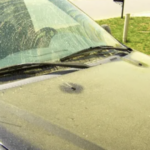 Why Car Washes Aren’t Enough to Combat Pollen Damage
February 13, 2025
Why Car Washes Aren’t Enough to Combat Pollen Damage
February 13, 2025
-
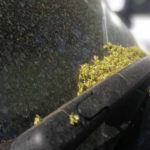 Orlando’s Pollen Problem: When Is It the Worst and How It Affects Your Car
February 13, 2025
Orlando’s Pollen Problem: When Is It the Worst and How It Affects Your Car
February 13, 2025
-
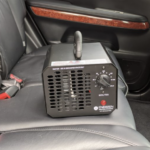 How Ozone Generators Eliminate Stubborn Car Odors in Orlando
February 12, 2025
How Ozone Generators Eliminate Stubborn Car Odors in Orlando
February 12, 2025
-
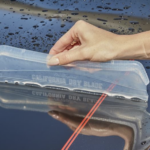 Why a Water Blade and Chamois Beat Towels Every Time!
February 9, 2025
Why a Water Blade and Chamois Beat Towels Every Time!
February 9, 2025

